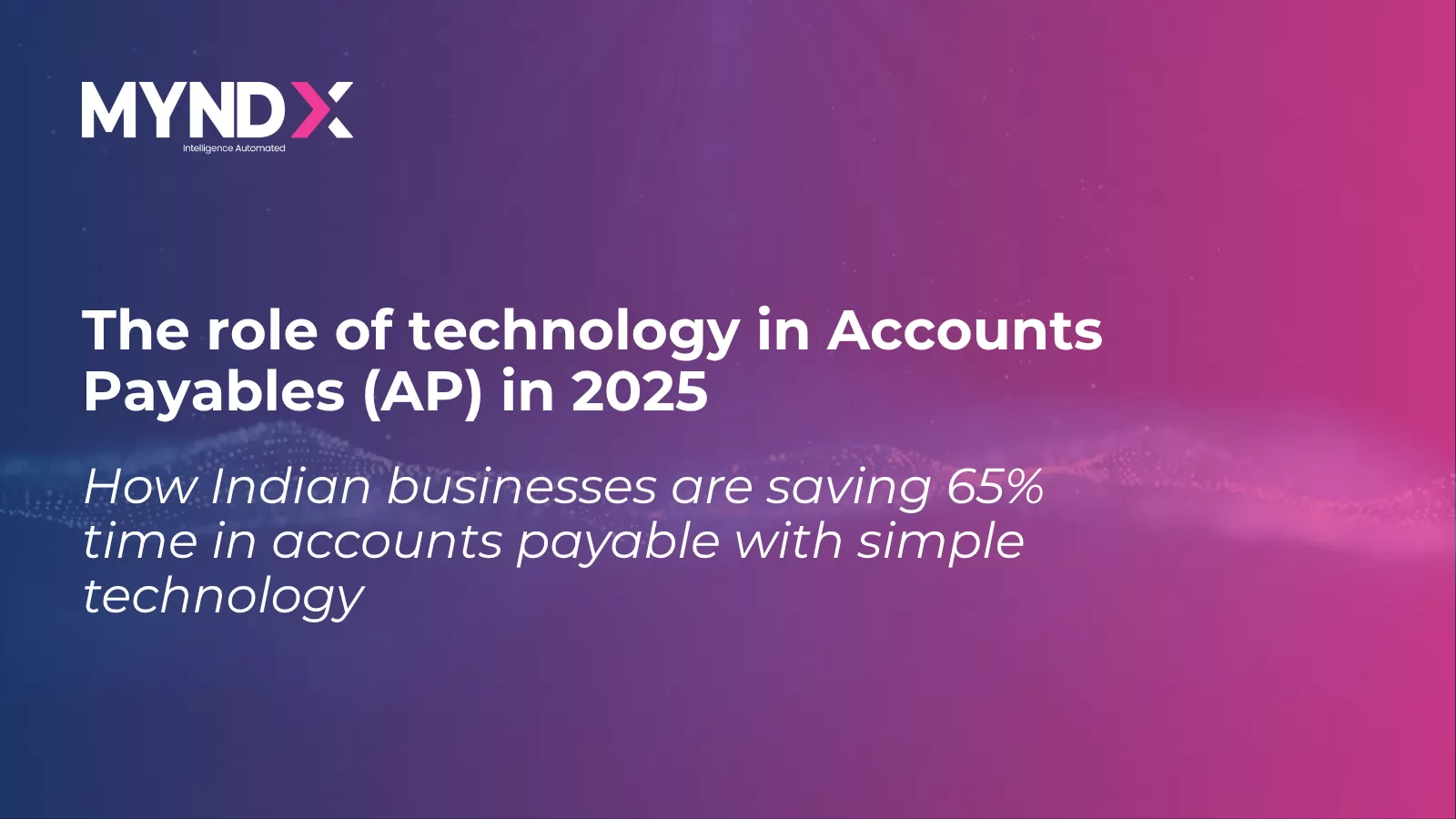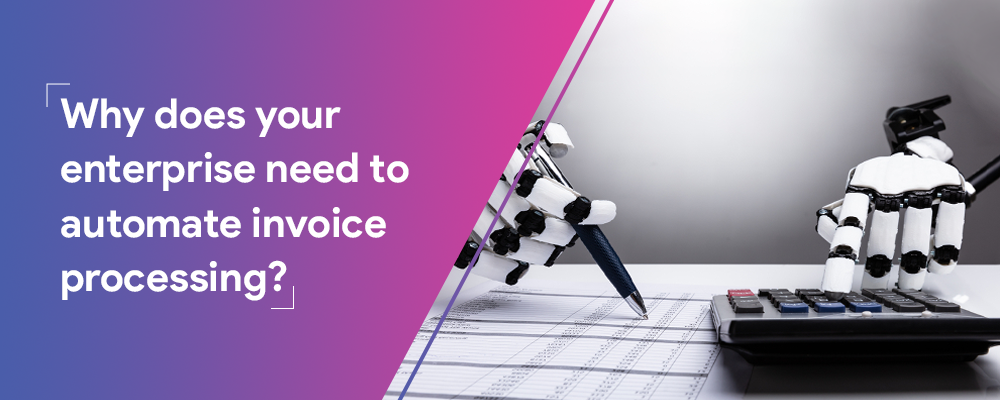In today’s rapidly evolving business environment, the finance and accounting functions are no longer just about tracking numbers. They are strategic powerhouses, capable of driving growth, ensuring compliance, and providing critical insights for decision-making. However, many organizations find their finance teams bogged down by manual, repetitive tasks, hindering their ability to contribute at a higher level. This is where finance and accounting automation steps in, transforming traditional processes into efficient, accurate, and insightful operations.
At MYND Integrated Solutions, we understand the intricate dance between technology and business strategy. We know that embracing digital transformation is not merely about adopting new software; it’s about reimagining processes, empowering people, and creating sustainable value. For finance and accounting leaders, as well as IT professionals, the challenge often lies in clearly articulating the value proposition of such a significant change. How do you convince stakeholders to invest in Finance Automation Solutions? The answer lies in building a robust, data-driven business case that highlights not just the technological advancements, but the tangible business benefits.
This comprehensive guide is designed to help you navigate the complexities of building a winning business case for finance and and accounting automation. We will explore the challenges, illuminate the opportunities, and provide a structured approach to quantifying the returns on this crucial investment. Our aim is to equip you with the knowledge to champion this transformation within your organization, ensuring a smoother, more strategic financial future.
Understanding the Current Landscape of Finance and Accounting
Before we can build a case for change, it is essential to understand the existing challenges within many finance and accounting departments. While the specifics may vary, common pain points often include:
- Manual Data Entry and Processing: This is perhaps the most significant time sink. Repetitive entry of invoices, expense reports, and reconciliation data is not only time-consuming but also prone to human error.
- Lack of Real-time Visibility: With data spread across disparate systems or locked in spreadsheets, getting a consolidated, up-to-date view of financial health can be a lengthy and frustrating process. This delays critical decision-making.
- Error Proneness and Rework: Manual processes inherently carry a higher risk of errors. Correcting these errors leads to rework, missed deadlines, and potential compliance issues, draining valuable resources.
- Limited Strategic Input: When finance professionals spend the majority of their time on transactional activities, they have less capacity to analyze data, provide strategic insights, and contribute to business growth initiatives.
- Compliance and Audit Challenges: Manual record-keeping can complicate audits and make it harder to ensure consistent adherence to regulatory requirements, potentially leading to penalties.
- Scalability Issues: As a business grows, manual processes struggle to keep pace, requiring significant increases in headcount, which may not always be sustainable or efficient.
The cumulative effect of these challenges is often a department operating reactively rather than proactively, constantly playing catch-up, and struggling to unlock its full potential. This is precisely where the strategic implementation of Finance Automation Solutions offers a clear path forward.
The Transformative Power of Finance Automation Solutions
Finance automation refers to the use of technology to streamline and optimize financial processes, reducing manual intervention and enhancing accuracy, speed, and efficiency. It encompasses a wide range of technologies and approaches, including Robotic Process Automation (RPA), Artificial Intelligence (AI) and Machine Learning (ML), cloud-based Enterprise Resource Planning (ERP) systems, and specialized financial software.
The adoption of robust Finance Automation Solutions brings about a paradigm shift, offering several key benefits:
- Increased Efficiency: Automated systems can process transactions significantly faster than humans, freeing up staff for more value-added activities.
- Enhanced Accuracy: By eliminating manual data entry and calculations, automation drastically reduces the likelihood of errors, leading to more reliable financial data.
- Improved Compliance and Auditability: Automated systems enforce rules and create detailed audit trails, making it easier to comply with regulations and streamline audit processes.
- Better Data Visibility and Insights: Real-time dashboards and automated reporting provide finance leaders with immediate access to crucial financial data, enabling quicker and more informed decisions.
- Cost Reduction: Automation can lead to significant cost savings by optimizing labor, reducing rework, minimizing penalties, and improving resource allocation.
- Enhanced Employee Satisfaction: By removing mundane, repetitive tasks, automation allows finance professionals to focus on more stimulating and strategic work, boosting morale and engagement.
- Scalability and Agility: Automated processes can easily scale to accommodate business growth without proportional increases in headcount, providing flexibility and resilience.
These benefits are not abstract; they translate directly into a stronger financial foundation and a more agile, competitive business.
Identifying Key Opportunities for Automation in Finance and Accounting
To build a strong business case, it is crucial to pinpoint specific areas within your finance and accounting functions that stand to benefit most from automation. Practical examples highlight the potential for Finance Automation Solutions:
- Accounts Payable (AP):
- Invoice Processing: Automating invoice capture, data extraction (using OCR/AI), matching against purchase orders (PO) and goods received notes (GRN), and routing for approval. This significantly reduces manual keying, errors, and processing time.
- Vendor Management: Streamlining vendor onboarding, communication, and payment scheduling.
- Accounts Receivable (AR):
- Automated Invoicing: Generating and sending invoices automatically based on sales data or contract terms.
- Cash Application: Automatically matching incoming payments to open invoices, reducing manual reconciliation efforts.
- Collections Management: Automated reminders for overdue payments and intelligent prioritization of collection efforts.
- General Ledger (GL) & Financial Reporting:
- Automated Reconciliations: Matching bank statements, intercompany transactions, and various ledger accounts automatically.
- Financial Close Processes: Orchestrating and automating tasks involved in the monthly, quarterly, and annual financial close, such as journal entries, accruals, and consolidations.
- Report Generation: Automatically pulling data from various sources to generate standard financial reports, management reports, and compliance filings.
- Expense Management:
- Automated Expense Reporting: Employees can easily submit expenses via mobile apps, with automated policy checks and approval workflows.
- Receipt Capture: Using AI to extract data from receipts, eliminating manual entry.
- Tax & Compliance:
- Automated Tax Calculations and Filings: Ensuring accurate and timely tax computations and submissions, especially for complex GST/VAT scenarios.
- Regulatory Reporting: Automatically generating reports required by various regulatory bodies, reducing the risk of non-compliance.
- Budgeting, Planning & Forecasting:
- Data Integration: Automatically pulling real-time financial and operational data into planning models.
- Scenario Planning: Enabling quicker generation and analysis of different financial scenarios.
By identifying these specific areas, you can begin to quantify the current inefficiencies and project the improvements that Finance Automation Solutions will bring.
Building a Robust Business Case: Key Components
A compelling business case is more than just a list of benefits; it’s a strategic document that outlines the problem, proposes a solution, and quantifies the financial and operational impact. Here are the essential components:
1. Clearly Define the Problem and Objectives
Start by articulating the specific challenges your finance department faces. Be precise and provide evidence. For example, instead of saying “AP is slow,” state: “Our manual invoice processing takes an average of 10 days, leading to 5% missed early payment discounts and requiring 3 full-time employees solely for data entry and reconciliation.”
Then, define clear, measurable objectives for the automation initiative. What do you aim to achieve? Examples include:
- Reduce invoice processing time by 70%.
- Improve data accuracy in GL reconciliations by 95%.
- Reduce the financial close cycle from 10 days to 3 days.
- Increase finance team capacity for strategic analysis by 25%.
2. Quantify the Costs of the Status Quo (Doing Nothing)
This is a critical step often overlooked. What are the hidden and obvious costs of maintaining manual processes? This helps emphasize the urgency and necessity of change.
- Labor Costs: Calculate the number of hours spent by employees on repetitive, automatable tasks. Multiply this by their fully loaded hourly cost (salary, benefits, overhead).
- Example: If 3 employees spend 80% of their time on manual AP tasks, and their average fully loaded cost is ₹50,000 per month, the annual labor cost for manual AP is ₹1,440,000 (3 * 0.8 * 50,000 * 12).
- Error Costs:
- Rework: Time spent correcting errors, re-entering data, and investigating discrepancies.
- Penalties: Fines for late tax filings, compliance breaches, or missed vendor payments.
- Lost Revenue/Opportunity: Missed early payment discounts (as mentioned above), delayed financial insights leading to poor business decisions, or lost customer trust due to billing errors.
- Operational Costs: Costs associated with printing, paper, storage, postage, and physical document management.
- Opportunity Costs: This is harder to quantify but important to acknowledge. What strategic initiatives are being neglected because finance teams are swamped with transactional work? What innovative projects could be undertaken if capacity were freed up?
3. Identify and Quantify the Benefits of Automation
Categorize benefits into tangible (quantifiable, monetary) and intangible (strategic, qualitative) to present a holistic picture.
- Tangible Benefits (ROI):
- Cost Savings:
- Labor Optimization: Not necessarily reducing headcount, but reallocating staff to higher-value roles. Calculate the potential savings from reduced overtime or the ability to absorb growth without additional hiring.
- Operational Efficiency: Savings from reduced paper, printing, and storage.
- Reduced Penalties and Fines: Improved compliance means fewer financial penalties.
- Early Payment Discounts: Faster invoice processing allows companies to capture more early payment discounts from vendors.
- Working Capital Optimization: Better cash flow management through optimized AR and AP cycles.
- Increased Throughput and Speed: Faster invoice processing, quicker financial closes, accelerated payment cycles.
- Reduced Errors: Quantify the financial impact of current error rates and project the savings from their reduction.
- Cost Savings:
- Intangible Benefits (Strategic Value):
- Improved Data Quality and Reliability: Foundation for better decision-making.
- Enhanced Compliance and Governance: Stronger internal controls and audit readiness.
- Better Business Agility and Scalability: Ability to adapt to market changes and support growth.
- Increased Employee Morale and Retention: Empowering employees with more engaging work.
- Enhanced Vendor and Customer Relationships: Through timely payments and accurate billing.
- Strategic Decision Support: Finance becoming a true business partner, providing forward-looking insights.
4. Analyze Implementation Costs
Be transparent about the investment required. This typically includes:
- Software Licenses/Subscriptions: Costs for the automation platform, ERP modules, or specialized applications.
- Implementation Services: Costs for setup, configuration, integration with existing systems (like your ERP, CRM, banking portals), and data migration. This is where expertise in various Finance Automation Solutions is crucial.
- Training: Costs for training your finance team and IT staff on new systems and processes.
- Change Management: Resources dedicated to managing the transition, addressing employee concerns, and ensuring adoption.
- Ongoing Maintenance and Support: Annual fees for software updates, technical support, and potential infrastructure costs (if on-premise).
5. Risk Assessment and Mitigation
Acknowledge potential risks and outline strategies to mitigate them. This demonstrates foresight and thorough planning. Common risks include:
- Integration Challenges: Ensuring seamless connection between new automation tools and existing legacy systems. Mitigation: Work with experienced integrators and plan for comprehensive testing.
- Data Security: Protecting sensitive financial data in automated systems. Mitigation: Implement robust security protocols, encryption, and access controls.
- Employee Resistance to Change: Fear of job loss or reluctance to learn new tools. Mitigation: Clear communication, involving employees in the process, and emphasizing upskilling opportunities.
- Vendor Lock-in: Becoming overly reliant on a single vendor. Mitigation: Thorough vendor evaluation and ensuring interoperability standards.
- Scope Creep: The project expanding beyond its initial objectives. Mitigation: Clear project scope definition and strong project management.
6. Calculate Return on Investment (ROI) and Payback Period
Finally, consolidate your costs and benefits into a clear financial projection. This is the heart of your business case for Finance Automation Solutions.
- ROI Calculation:
ROI = (Total Tangible Benefits - Total Implementation Costs) / Total Implementation Costs * 100 - Payback Period: The time it takes for the tangible benefits to offset the initial investment.
Presenting these figures clearly and concisely demonstrates the financial viability of the project.
The Role of Technology and Strategic Partnerships
Implementing Finance Automation Solutions is a significant undertaking that extends beyond simply purchasing software. It involves a deep understanding of financial processes, technical expertise in integration, and a strategic approach to change management. This is where the right technology partner becomes invaluable.
A successful automation journey requires:
- Expertise in Diverse Technologies: From advanced ERP systems to intelligent automation platforms, a partner with broad experience can recommend and implement solutions best suited to your specific needs.
- Process Re-engineering Capabilities: Automation is most effective when it is built on optimized processes, not just layered over existing inefficient ones. A good partner helps you rethink and refine your workflows.
- Seamless Integration: Ensuring your new automation tools communicate effectively with your existing IT infrastructure (e.g., legacy systems, other enterprise applications) is crucial for data consistency and operational flow.
- Data Security and Compliance Focus: A partner committed to robust security measures and understanding of regulatory compliance ensures your automated systems meet all necessary standards.
- Change Management Support: Guiding your team through the transition, providing adequate training, and fostering adoption are key to long-term success.
Engaging with a partner who understands both the technology landscape and the nuances of finance and accounting operations can significantly de-risk your automation project and accelerate its benefits. They can help identify the most impactful areas for automation, select appropriate Finance Automation Solutions, and guide you through the entire implementation lifecycle.
Tips for Presenting Your Business Case to Stakeholders
Even the most meticulously crafted business case needs an effective presentation to win over decision-makers. Here are some tips:
- Know Your Audience: Tailor your message. CEOs might focus on strategic growth and competitive advantage, while CFOs will want to see clear ROI and cost savings. IT leaders will be interested in integration and security.
- Start with the Problem: Clearly articulate the pain points and their current impact before diving into the solution.
- Focus on Measurable Outcomes: Use the quantified benefits and ROI figures prominently. Numbers speak louder than words.
- Address Concerns Proactively: Be prepared to discuss risks and mitigation strategies. This builds confidence.
- Emphasize Strategic Value: Beyond cost savings, highlight how automation enables the finance function to become a strategic partner, contributing to business growth and innovation.
- Use Visuals: Charts, graphs, and simple diagrams can make complex data easier to understand and more impactful.
- Tell a Story: Illustrate with practical examples of how automation will transform daily tasks and empower employees.
Conclusion
Building a compelling business case for finance and accounting automation is a strategic exercise that requires thorough research, careful quantification, and clear communication. It’s about more than just justifying a technology purchase; it’s about demonstrating a strategic vision for a more efficient, accurate, and insightful finance function. By meticulously outlining the current challenges, highlighting the transformative power of Finance Automation Solutions, and quantifying the tangible and intangible benefits, you can present an undeniable argument for investment.
The journey towards finance automation is a journey towards future-proofing your business. It allows your finance team to move beyond transactional processing and embrace a role as strategic advisors, leveraging real-time data to drive better business outcomes. We encourage you to embark on this path with a clear understanding of your goals and a well-articulated plan.
If you’re ready to explore how your organization can leverage advanced technology to revolutionize your finance and accounting operations, we encourage you to take the next step. Begin by assessing your current processes, identifying key areas for improvement, and envisioning a more efficient future. Consider engaging with experts who can help you craft a tailored automation strategy and build a robust business case that resonates with your stakeholders. The future of finance is automated, and the time to build your foundation is now.














